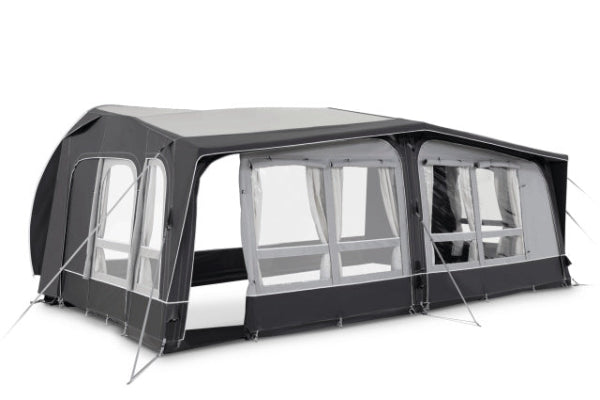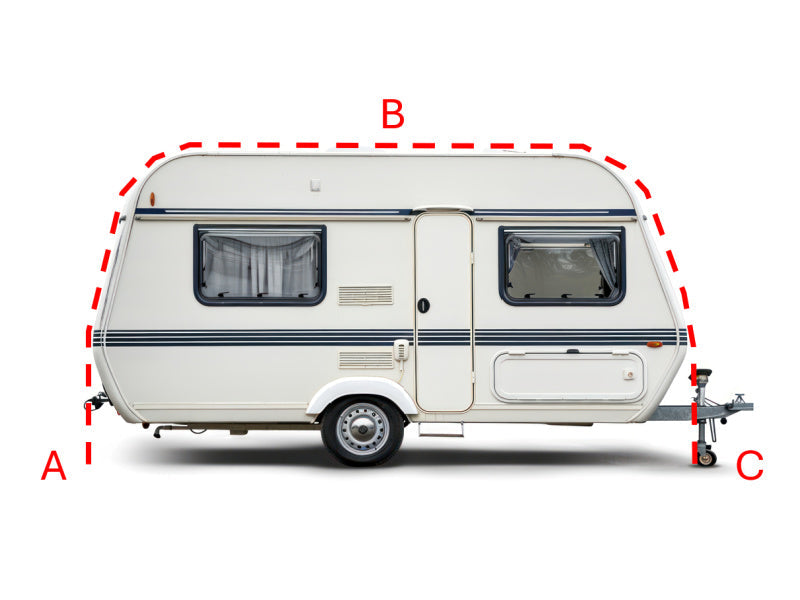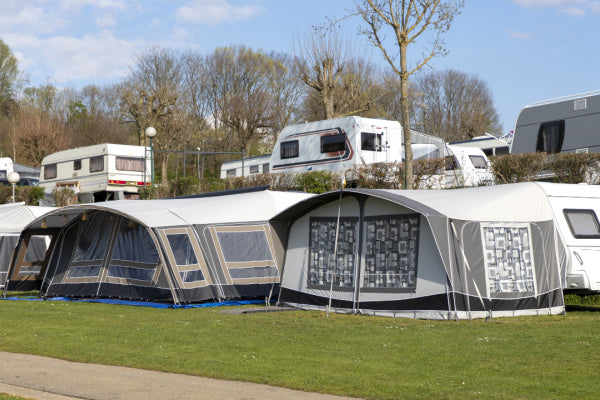Are Portable Power Stations Safe?
Worried your Portable Power Station might turn into a campfire? Don’t be.
Short answer: Yes, they’re safe—if you use them right.
From exploding myths (not batteries) to fire-free tips, we’ll zap through what you need to know to power up without freaking out. Keep reading, it’s shockingly useful.
More and more people are using portable power stations for outdoor adventures or living off-grid. But concerns about safety often come up.
These devices are vital for camping, emergencies, and situations where mains power isn’t available. They deliver electricity wherever you are.
However, they can pose risks if not handled properly. Understanding how they work and knowing basic precautions can help you avoid trouble.

Core Safety Technologies in Modern Portable Power Stations
Portable power stations are essentially rechargeable batteries paired with inverters and protective circuits. They're designed to be safe, mobile sources of electricity.
Their key safety features play a huge role in how secure they are to use.
Battery Chemistry Deep Dive: Why LiFePO4 is Often Preferred for Safety
While many units still use lithium-ion batteries, LiFePO₄ (Lithium Iron Phosphate) is increasingly common. It offers greater thermal stability and a lower risk of combustion compared to traditional chemistries.
This makes it a top choice for safety-conscious users, especially in extreme conditions.
The Indispensable Battery Management System (BMS)
A good Battery Management System (BMS) is essential.
It helps balance battery cells, prevent overcharging or deep discharge, and monitor temperature. These functions reduce the likelihood of failures or dangerous malfunctions.
Without a functioning BMS, even a well-built unit can become unsafe over time.
Protection Against Overcharge and Over-discharge
Top manufacturers include protections that cut off charging once the battery is full.
They also prevent the battery from being drained too low, which can damage the cells or reduce lifespan.
These features operate automatically in the background to ensure safe and efficient use.
Preventing Short Circuits and Over-Current Issues
Short circuit protection is another key built-in feature.
It stops sudden surges of current from causing internal damage or triggering overheating.
This is particularly important when charging or running high-wattage devices.
Advanced Thermal Management and Temperature Control
Portable power stations often come with temperature sensors. These regulate charging and discharging to prevent overheating.
This is crucial in warm environments or during extended use. Some even have active cooling fans or heat dissipation systems to help manage internal heat.
Inverter Quality: The Importance of Pure Sine Wave for Device Safety
Cheap inverters can damage sensitive equipment.
Look for units with pure sine wave inverters, which replicate the smooth electrical flow of home sockets. This protects electronics like laptops, cameras, or medical gear from unstable power delivery.
Build Quality and Enclosure Integrity
Well-designed casings offer shock resistance and help prevent moisture ingress.
Tough enclosures protect the internal systems from physical impacts or exposure to dust and humidity.
Look for units with reinforced edges or industrial-grade materials if you plan to use them outdoors.

Understanding and Verifying Safety Standards
Buying from trusted sources ensures the unit meets safety expectations—not just marketing claims.
Key Safety Certifications to Look For (UL, CE, FCC, RoHS)
Well-built power stations often carry labels such as UL, CE, FCC, or RoHS.
These certifications indicate that the device has passed safety, emissions, or environmental impact tests.
What These Certifications Mean for You
Certifications aren't just stamps—they mean the unit has been put through rigorous third-party evaluation.
This covers things like electrical insulation, overheating protection, and safe material use.
It’s your sign that a device is built to perform safely under pressure.
Risks of Using Non-Certified or Counterfeit Products
Counterfeit or uncertified units may skip vital safety features.
They often use substandard parts and can pose serious hazards, including fire or electrocution. Always buy from reputable sellers and verify product details.
Potential Hazards and How to Mitigate Them
Even safe devices can go wrong if misused. Knowing the risks helps you stay ahead.
Examining the Fire Risk: Causes and Prevention
Fires can occur if batteries overheat, are overcharged, or suffer physical damage.
Avoid placing units near heat sources and always use the recommended charging methods.
If the device feels unusually hot or emits a burning smell, stop use immediately.
Internal vs. External Factors (Damage, Overheating, Manufacturing Defects)
Not all issues are user-related.
Manufacturing flaws or a drop during delivery can cause unseen internal problems. It's a good idea to inspect your device when it arrives and before each use.
Choosing Reputable Brands to Minimise Risk
Established brands invest in better quality control and materials.
They’re more likely to meet safety standards and offer warranty support if something goes wrong.
Buying the cheapest option can come with hidden costs.
Electric Shock Prevention: Grounding, Insulation, and Safe Handling
To prevent shocks, avoid using your station with wet hands or near water.
Make sure the unit is grounded if required, and never attempt to modify its internal components.
Insulated cables and enclosed ports also reduce the risk.
Protecting Your Sensitive Electronics from Damage
Surges or poor-quality power can harm laptops and mobile gear.
Using a power station with a regulated inverter and surge protection adds peace of mind when charging costly devices.
Risks Associated with Water Exposure and Extreme Temperatures
Keep your unit dry at all times.
Water can corrode circuits and cause shorts, even with brief exposure.
Likewise, extremely hot environments can speed up battery wear or cause swelling. Store in shaded, cool areas when possible.
Essential Guidelines for Safe Operation and Maintenance
A little care goes a long way in making sure your station lasts and stays safe.

Best Practices for Charging Your Power Station Safely
Charge in a ventilated space, away from flammable items.
Don’t leave it unattended for long stretches during charging.
Unplug when it reaches full charge to avoid stress on the battery.
Using Manufacturer-Approved Chargers
Only use the charger included with the device or one that’s manufacturer-approved.
Third-party options may not support voltage regulation or protective circuits.
Avoiding Overcrowded Outlets and Unstable Surfaces
Place your station on a firm, flat surface.
Avoid using it near messy cables or overloaded extension cords. These can become trip hazards or cause overheating.
Safe Usage Tips for Everyday Operation
Keep the device away from children and pets.
Avoid stacking things on top of it, and never block ventilation vents.
Turn off unused ports to reduce power draw and heat.
Ensuring Proper Ventilation During Use
Vents must stay clear to let heat escape.
If using indoors, place the device where air can circulate freely around it.
Adhering to Load Capacity Limits (Wattage)
Every power station has a maximum wattage rating.
Stick to that limit to avoid overheating or tripping internal circuit protection.
Considerations for Indoor vs. Outdoor Use
Check the model’s IP rating or guidance for weather resistance.
If it’s not designed for outdoor use, keep it away from moisture and dust.
Proper Storage to Maintain Safety and Longevity
Store in a dry, shaded place with stable temperatures.
Avoid leaving it in cars on hot days or exposed to freezing conditions.
Recognising Warning Signs: What to Do if Your Unit Seems Unsafe (Swelling, Odours, Overheating)
Swollen casing, strange smells, or excessive heat are signs of failure.
Unplug and stop using the device immediately.
Contact the manufacturer for advice, or safely recycle the unit if it’s clearly damaged.
How Do Portable Power Stations Compare to Gas Generators in Terms of Safety?
Portable power stations are often considered a safer alternative to traditional fuel-powered generators.
The Carbon Monoxide (CO) Advantage: Safe Indoor Operation
Unlike petrol generators, battery power stations don’t emit carbon monoxide.
This makes them suitable for indoor use during blackouts or emergencies.
Reduced Flammable Fuel Risks
You don’t need to store petrol or deal with fuel leaks.
This removes a huge fire risk and eliminates messy refills.
Quieter Operation and Fewer Moving Parts
No noisy engine, no oil changes, and far fewer failure points.
The lack of moving parts means less wear and tear—and a safer user experience overall.
Other content you might like:
- Are Portable Power Stations Worth the Money?
- Portable Power Stations: Pros and Cons
- How to Compare Portable Power Stations?
- What Is the Most Reliable Portable Power Station?
- How Do I Choose a Portable Power Station?
- Is It Worth Buying a Portable Power Station?
- What Is the Best Battery for Off-Grid Solar Panels?
- Are Portable Power Stations Worth It for Camping?
- What Is the Best Power Station for a Campervan?
- What Size Portable Power Station Do I Need for Camping?





Leave a comment